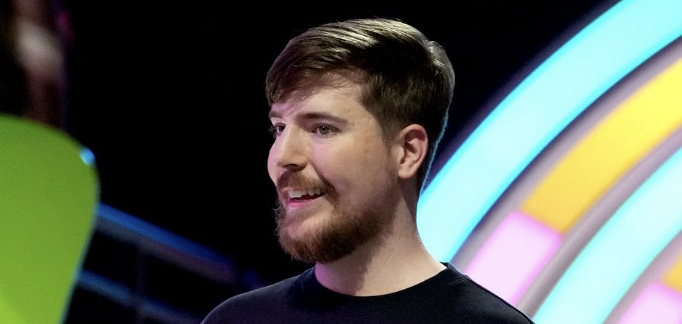YouTube has evolved into a massive industry, and behind every successful creator is a skilled video editor who knows how to turn raw footage into engaging, viral content. If you’ve ever wondered how to become a video editor for YouTubers, this guide will walk you through every step — from building your first portfolio to mastering YouTube-specific editing techniques that make creators want to work with you.
Build a Strong Portfolio — Even If You’ve Never Worked for a YouTuber
Don’t wait for a paid client to start your portfolio. You can build credibility before landing your first gig.
How to Build Your YouTube Editing Portfolio:
- Edit mock projects: Take existing royalty-free footage and create short 60–90-second edits inspired by popular YouTubers (MrBeast, Emma Chamberlain, Ali Abdaal, Marques Brownlee, etc.).
- Offer a free video edit: Choose a small creator (under 10 K subscribers) and edit one of their videos for free. It’s the best way to get real-world samples and testimonials.
- Show the transformation: In your showreel, include before/after snippets — “raw clip → final edit.” It visually demonstrates your impact.
- Focus on relevance: Make your reel look like YouTube content, not cinematic film. Include quick cuts, subtitles, memes, and energetic music.
Your goal: show that you understand the YouTube language.
🎯 Pro tip: Once you pick your niche, customize your showreel around it. If you want to edit for fitness YouTubers, your reel should look like a gym vlog — not a cinematic short film.
Learn YouTube-Specific Editing Techniques
To truly succeed, you must master the art of editing for retention. YouTube’s algorithm rewards videos that keep viewers watching.
Here are some proven techniques every YouTube editor should know:
✅ Hook the viewer in the first 15 seconds
Use a cold open, teaser, or surprising statement. Add jump cuts and graphics to make the intro dynamic.
✅ Maintain attention with “pattern interrupts”
Every 5–10 seconds, change something — angle, zoom, text, effect, meme, or music beat.
✅ Optimize pacing and emotion
Alternate between fast sequences and short pauses to give breathing room. Use sound effects and background tracks to enhance emotion.
✅ Add text, captions, and memes
They make videos more accessible and more entertaining. Use bold, readable fonts that match the creator’s brand.
✅ Design clickable outros
Encourage viewers to watch another video. As an editor, help structure the end screen and suggest end cards.
✅ Deliver in YouTube-friendly formats
Use H.264 (MP4), 1080p or 4K, and double-check safe zones for mobile viewing. Optimize export settings for fast upload and sharp thumbnails.
The Best Way to Find YouTuber Clients (Even as a Beginner)
Getting your first clients is often the hardest part — but there’s a proven method.
Step-by-Step YouTuber Outreach Strategy
- List 20 creators you genuinely enjoy (in your chosen niche).
- Watch their content and note improvement opportunities — pacing, captions, color grading, etc.
- Send a personalized message:
“Hey [Name], I love your content, especially your video on [Topic].
I’m a video editor specializing in [Niche] channels and I’d love to edit one video for you — completely free — so you can see my style in action.”
- Deliver an exceptional edit — treat it like a paid job.
- Ask for feedback and a testimonial.
- Offer a monthly package if they’re happy.
💡 You’re not working for free — you’re investing in social proof.
Use Tools and Automation to Speed Up Your Workflow
Modern YouTube editors use AI and automation to edit faster and scale.
- Descript or Wisecut for auto-transcription and cuts.
- Premiere Pro + After Effects for advanced motion graphics.
- DaVinci Resolve for color grading.
- ChatGPT or Jasper for script tightening or caption ideas.
- Frame.io for client feedback.
Time is money — and creators love editors who deliver quality fast.
Keep Improving and Stay on Trend
YouTube trends shift quickly. Study what’s working:
- Watch breakdowns of viral videos.
- Follow channels like Film Booth, Paddy Galloway, and Creator Hooks to understand storytelling and retention.
- Learn motion graphics, thumbnail theory, and creator psychology.
The best YouTube editors are obsessed with making every frame more watchable.
Scale Up: From Freelancer to YouTube Editing Studio
Once you’ve built a stable client base:
- Hire junior editors to handle first cuts.
- Build templates and workflows to speed up production.
- Offer premium services like short-form repurposing (TikTok, Reels, YouTube Shorts).
- Create a personal website showcasing testimonials, reels, and packages.
Think like an entrepreneur, not just a freelancer.
Action Plan Summary
✅ Define your niche
✅ Build a YouTube-style portfolio (even with mock or free projects)
✅ Master retention-driven editing
✅ Reach out to creators with personalized offers
✅ Leverage AI and automation
✅ Learn continuously and build systems
🎓 Take the Fast Track — Learn with Miracamp
If you’re serious about becoming a professional YouTube video editor, the best way to level up is with expert guidance.
Miracamp’s Video Editing Course is a premium program designed to help you:
- Master Premiere Pro or DaVinci Resolve, and AI tools for faster workflows.
- Build a powerful demo reel tailored for YouTubers.
- Learn client acquisition, pricing, and career strategy.
- Get one-on-one coaching from editors who’ve worked with brands like HBO.
🎥 Start your journey today — join Miracamp and turn your editing passion into a profitable YouTube career.
FAQ - Editor for YouTubers
What skills do you need to become a YouTube video editor?
To become a YouTube video editor, you need strong storytelling, pacing, and visual rhythm skills. You should master tools like Adobe Premiere Pro, DaVinci Resolve, or Final Cut Pro, understand viewer retention, and know how to use captions, jump cuts, and motion graphics effectively. Knowledge of YouTube trends and algorithm behavior is also a major advantage.
How do I get my first YouTube video editing client?
Start by offering a free or low-cost edit to a small creator (under 10 K subscribers) in your target niche. Deliver high-quality work, ask for a testimonial, and request to be credited in the video description. This builds your portfolio fast and helps you earn trust from future clients.
Can I become a YouTube editor without experience?
Yes. You can start without experience by creating mock projects using stock footage or re-editing public clips. Then, build a demo reel that mimics the editing style of popular YouTubers. Offer a free trial edit to creators to demonstrate your skill before charging for projects.
How much do YouTube video editors earn?
YouTube editors typically earn between $25 and $100 per hour, depending on skill level, niche, and turnaround speed. Many editors move to monthly retainers once they build trust with a creator, which can generate $1,000–$5,000+ per month per client.
What software do YouTubers use to edit their videos?
Most professional YouTubers and editors use Adobe Premiere Pro, DaVinci Resolve, or Final Cut Pro for advanced control. Others use CapCut or Descript for faster, AI-assisted workflows. The best editors combine creative tools with automation to deliver faster results.
How do I make my editing stand out on YouTube?
Focus on viewer retention. Use quick pacing, subtitles, emojis, and smooth transitions. Add motion graphics, captions, and color grading that match the creator’s branding. Study retention graphs in YouTube Analytics to understand where viewers drop off — and refine your editing accordingly.
What is the best niche for YouTube video editors?
The best niches include gaming, tech reviews, education/tutorials, lifestyle/vlogs, and fitness. Specialising in one niche helps you understand what works for that audience and makes your portfolio more attractive to similar creators.
Do YouTube editors need to know SEO?
Yes — editors who understand YouTube SEO can help creators rank better. You should know how to optimise titles, thumbnails, tags, and video descriptions. Editors who also help improve retention and watch time become invaluable partners for creators.
How can I grow as a professional YouTube editor?
Keep learning new editing techniques, study analytics, and adapt to trends like Shorts and AI editing tools. Build a personal brand, post your reel on LinkedIn and Twitter, and collect testimonials. Networking and consistency are key to scaling your freelance or studio business.
Where can I learn professional YouTube video editing?
You can learn from YouTube tutorials, online courses, or specialised bootcamps like Miracamp.
Miracamp’s premium Video Editing Bootcamp teaches advanced editing, AI automation, and YouTube-specific storytelling — plus a full career module on building your demo reel, client outreach, and pricing strategy to become a professional YouTube editor.






